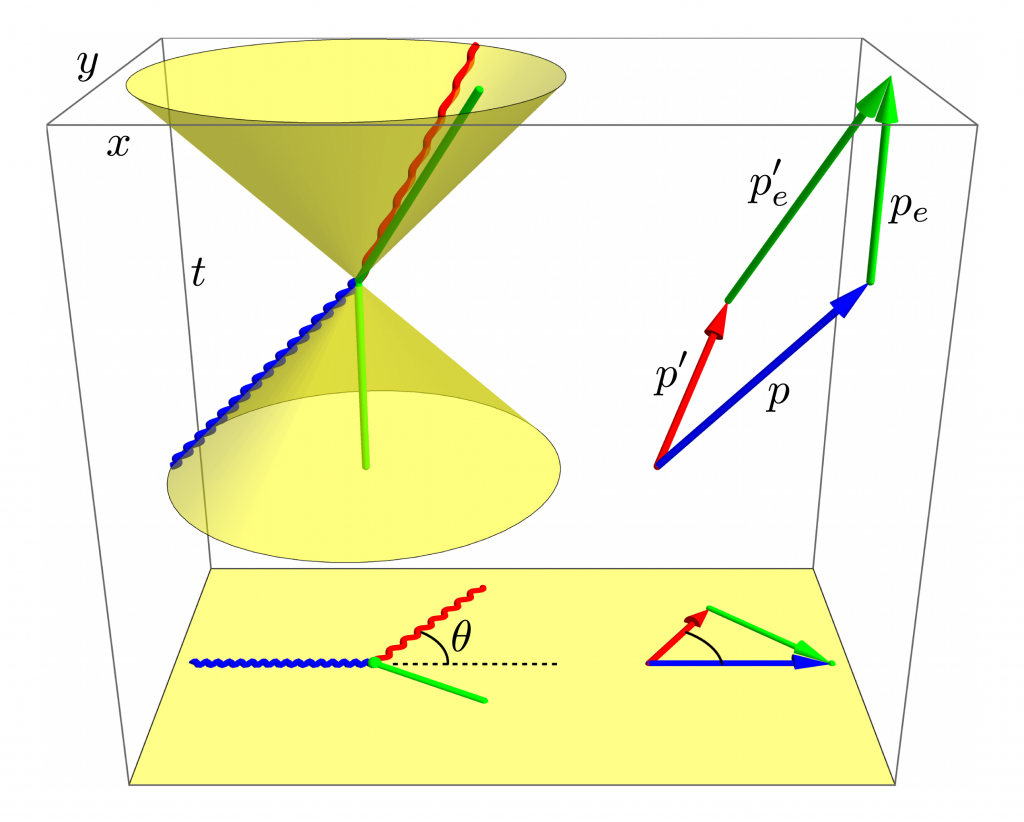One hundred years ago today the Physical Review published research on light scattering electrons that would earn its author, Wooster graduate Arthur Compton, a Physics Nobel Prize.
By relativistically conserving spacetime momentum, as in the diagram below, and treating light as particles now called photons, Compton discovered that deflecting an electron through an angle \theta stretches the light’s wavelength by
\frac{ \Delta \lambda}{\lambda_c} = 1 – \cos\theta,where \lambda_c = h / mc \sim 1/40 \textup{~\AA} is the Compton wavelength of the electron. Compton’s experiment helped convince the physics community of wave-particle duality. Today, sophomores Compton scatter in our Modern Physics lab.

Compton scattering of a photon (blue to red) from an electron (green) in space (bottom) and spacetime (top). The photon lives on the light cones while the electron lives in the light cones

Thanks, Mark! I enjoy reading your posts as well.